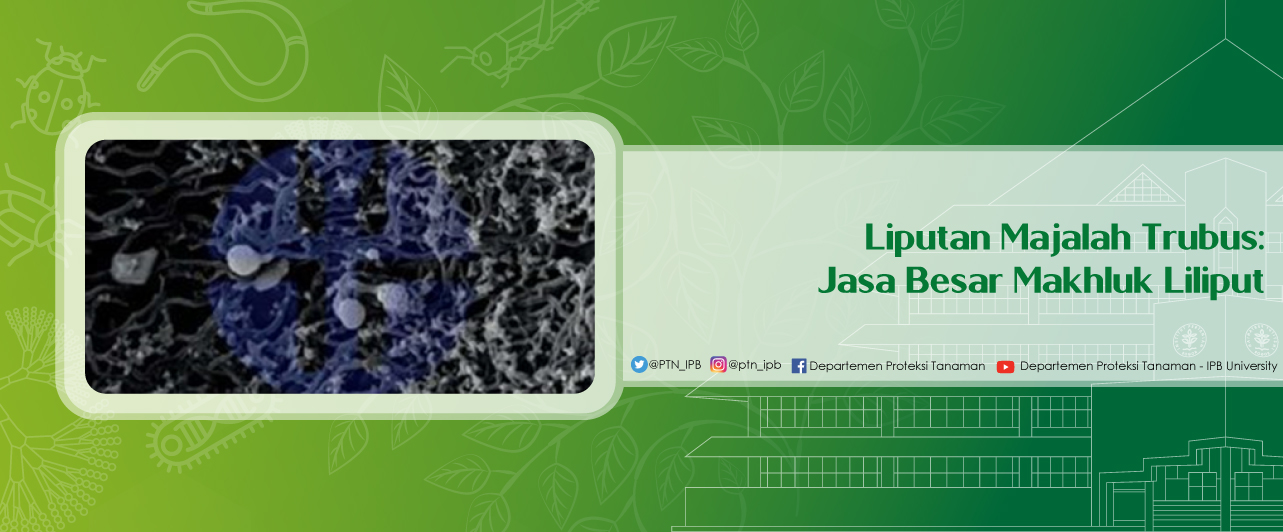
Trubus Magazine Coverage: Great Service of Liliput Creatures
A smile adorned Nasir's face because he harvested tomatoes up to 15 times. Previously, the tomato harvest in Nasir's garden was only 7-10 times. The total production also jumped to 5 kg, originally only 4 kg per plant. Of course, the profits of farmers in Bandorasa Kulon Village, Cilimus District, Kuningan Regency, West Java, have also increased. In addition, Nasir harvested leaf vegetables such as caisim 3 days earlier, namely on the 37th day after planting. Nasir's local chilies also last up to 3-5 years from the original 1 year.
In fact, mealybug pests in rice were resolved 15 days after treatment with certain ingredients. It's relatively fast. It takes 30 days to get rid of the pest if you use a manufacturer's insecticide. Sometimes the use of insecticides causes the rice to die. Nasir indeed cultivates a variety of food crops, vegetables and fruit on nearly 1 hectare of land. "I am happy with the harvest," said the farmer who has been managing the land himself since 2015.
What is Nasir's secret so as to get all these privileges? He relies on fertilizers containing plant growth-promoting rhizobacteria (PGPR). Nasir mix 2-3 tablespoons of powdered PGPR with 3 kg of steamed cassava, 1.5 liters of molasses, 2 kg of brown sugar, and 30 liters of water in a container. He stirred evenly, and closed the container. Fermentation is successful if the solution is fragrant on the 3rd day.
The farmer who is more than 40 years old then filters the fementation product as a brownish prickly solution. Nasir dissolved about 240 ml of starter solution in 17 l of clean water and sprayed it all over the plants. This is how the tomato harvest frequency has increased by 15 times, the caisim harvest is faster, and the chili plants last up to 5 years. Another advantage of using PGPR is that it reduces production costs by up to 40% and the land is more fertile.
Initially Nasir bought 500 kg of synthetic chemical fertilizers every year. Now he only needs 100 kg of synthetic chemical fertilizers every year. "I can save Rp10 million per year," said the man who was born in Kuningan Regency, West Java. The PGPR used by Nasir is special because it comes from the Gunung Ciremai National Park (TNGC) forest area. The farm managed by Nasir is located around TNGC.
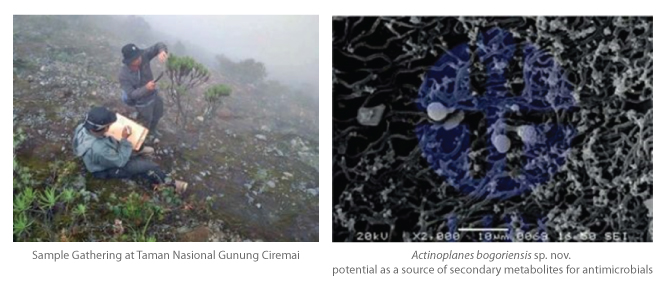
PGPR from Mount Ciremai is the result of exploration of biological resources by the TNGC Center and the Department of Plant Protection Faculty of Agriculture,IPB University. According to a lecturer at the Department of Plant Protection, Faculty of Agriculture, IPB University, Dr. Ir. Suryo Wiyono, M.Sc.Agr., C-71 is a bacterial isolate that promotes plant growth. The bacteria were able to increase the root length of tomato seedlings by 42.35% and increase the germination of tomatoes by 178%.
The isolate also makes tomatoes more resistant to leaf spot disease. Another benefit of the isolates originating from the root soil of bamboo also increased the growth of root length, plant height and leaf length of cayenne pepper compared to the control group using artificial chemical fertilizers. Forest Ecosystem Controller (PEH) at TNGC, Asep Uus Susanto, S.Hut., Said the trial of the PGPR formula involved communities in TNGC buffer villages such as Nasir's gardens.
Microb exploration is carried out so that agricultural management around TNGC is more environmentally friendly. Hopefully, in 2016, a Javan Eagle, a resident of TNGC, died. "It is suspected that the bird ate food from outside the area. The type of feed may be snakes or other types, "said Uus. Previously, agricultural practices around TNGC relied more on synthetic chemical fertilizers and pesticides.
Professor of IPB University in the field of soil science and land resources at the Faculty of Agriculture, IPB University, Prof. Dr. Ir. Dwi Andreas Santoso, M.S., said that our agricultural system tends to focus on the use of synthetic chemical products. The impact of life and the diversity of microbes in the soil is getting increasingly depressed due to the massive intake of synthetic products.
It is useless to provide fertilizer if there is very little microbial diversity in the soil. For example the use of Urea. Plants cannot absorb urea in the form of urea. Urea must be broken down by microorganisms into ammonium so that it can be absorbed by plants. If the population and diversity of microbes in the soil decrease drastically, it will have an effect on plant growth. Therefore, currently the use of plant growth stimulants is relatively massive.
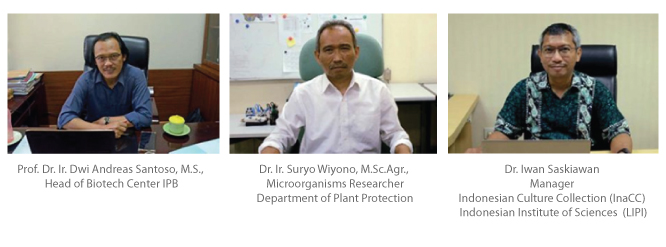
"Without maintaining the diversity of microbes, the risk for the sustainability of future agriculture is quite large," said the doctoral alumnus of the Faculty of Life Sciences, Technische Universitaet. Braunscweig, Germany, that. Apart from PGPR, the research team also found microbial insect pathogens and frost candidates in TNGC. Microbial groups of insect pathogens, especially planthoppers and bugs in the form of the fungus Hirsutella sp. and Lecanicillium sp. The antifrost candidates were PGMJ isolates from Mount Paraserianthes montana and A1 from the orchid Vanda sp.
According to Suryo, the discovery of natural microbial antifrost candidates is a new thing in Indonesia. In fact, antifrost microorganisms have been commercialized in the United States. However, the microbes used include genetically modified organisms (GMO). The test results in the field revealed that the antifrost candidate microbes were able to suppress frost damage by around 60% at temperatures of minus 5-9 oC.
"Our microbial germplasm is extraordinary. The benefits of microbes are numerous. We haven't used it optimally, let alone massive, ”said the doctor in the field of Plant Pathology and Protection, an alumnus of The University of Göttingen, Germany. The role of other microbes in agriculture is controlling pests and diseases, decomposers, and making plants adaptive to abiotic stress such as drought. Most recently there is yeast (yeast) to extend the shelf life of fruit. The trick is that microbes reduce the production of ethylene which plays a role in ripening the fruit.
Andreas said, the use of microbes for agriculture such as PGPR, including biotechnology in general. Biotechnology is the use of organisms and their genes to produce goods and services. The development of microbial utilization for plant growth is quite rapid. Small farmers have applied biotechnology by making local microorganisms (moles).
"The key and the potential of biotechnology actually lies in microorganisms because of their extraordinarily high biodiversity. Microbial is major in biotechnology. It's just that it is very rare to be serious about conserving the microbes. said Andreas who is also the Head of the IPB Biotech Center. Transgenic plant genes were from the bacterium Bacillus turingiensis. Nearly all enzyme production today comes from transgenic microbes.
Microorganisms are not only useful for agriculture. Xanthan gum and pullulan are products of industrial microorganisms. Xanthomonas campestris bacteria produce xanthan gum naturally. The use of polysaccharides, among others, as a stabilizer for drinks. While pullulan is a metabolite of Aureobasidium pullulan. The use of pullulan, among others, as a substitute for starch in the food industry.
Andreas said, "The potential of microbes is extraordinary." There are Streptomycetes sp. at Oregon State University, United States, which produces the highest anti-cancer antibiotics. In fact, there is a streptomycin antibiotic whose bacteria originates from the soil in Jakarta, based on the patent that Andreas saw. He also isolated bacteria in Indonesia to produce electrical energy.
The diversity of microbes in Indonesia is the richest in the world. In fact, until now it has not been answered how many microb species in the world are. Very few are listed at this time. Unfortunately, the extraordinary potential of microbes has not been fully explored. In fact, maybe some microbes could become extinct before being identified and known for their potential. Manager of Indonesian Culture Collection (InaCC), Center for Biological Research, Indonesian Institute of Sciences (LIPI), Dr. Iwan Saskiawan, said that forest fires and illegal logging could lead to the extinction of a type of microorganism.
The results of the research by the macro mushroom research team at the LIPI Biology Research Center showed that the types of macroscopic fungi in the Bogor Botanical Gardens decreased from year to year. It can be indicated that climate change is happening. Either the humidity is lacking or the temperature is increasing. The reason is that there are certain types of fungi that grow at certain temperatures and humidity. You could say that the fungus acts as a bioindicator. In addition to the use of microbes, the increase in crop production is carried out by genetic engineering techniques.
In other words there is the transfer of genes from one species to another. This method still raises pros and cons in Indonesia. Mainly concerned with the long-term effects of genetically modified products in the body.
Actually, there are quite a lot of transgenic plants in Indonesia. The problem with copyright is due to the many methods and tools patented by large multinational companies. Director of the Indonesian Biotechnology Information Center (IndoBIC), Prof. drh. Bambang Purwantara, M.Sc., Ph. D., said the advantages of biotech crops include increasing productivity, reducing production costs, and making food prices more affordable.
Another advantage of biotech crops is preventing deforestation and maintaining biodiversity. Bambang said that soybean, corn, cotton, canola and alfalfa were the most widely planted biotech crops in 2019. The countries that planted the most biotech crops were the United States, Canada, Argentina, Brazil, and India. According to Andreas, the latest research developments do not have to transfer foreign genes between species.
"There is an approach that we know as gene silencing and gene editing," said the Head of the Indonesian Center for Biodiversity and Biotechnology (ICBB) Foundation Advisor. An example of gene silencing is deactivating genes that might interfere with plant growth or decrease production. Meanwhile, making genes that play a role in spurring growth is even more active, including gene editing efforts.
Gene editing to increase crop production and to make plants resistant to environmental stress. According to Andreas, the silencing and gene editing takes place in the plants themselves. This means that we manage the genes present in the plant. There is no transfer of genes to other species as in GMOs. Iwan said, "At the 2020 National Education Day, Minister of Research and Technology Bambang Brojonegoro emphasized that researchers pay attention to the biodiversity of microorganisms because they play an important role in human life in the future."
This means that the government has begun to glance at the great potential of Indonesia's microorganism wealth. Even so, Suryo said, there are several things that must be done for the development of microorganisms, such as a national microb research road map. Upon completion, the research formulation was patented. In addition, there is a need for synergy between researchers, the private sector, and the community. According to Andreas, there must be a strong political will related to microorganism research so that it can be maximally utilized. (Riefza Vebriansyah)
Visit the following link for articles in Trubus Magazine: Great Services of Liliput Creatures



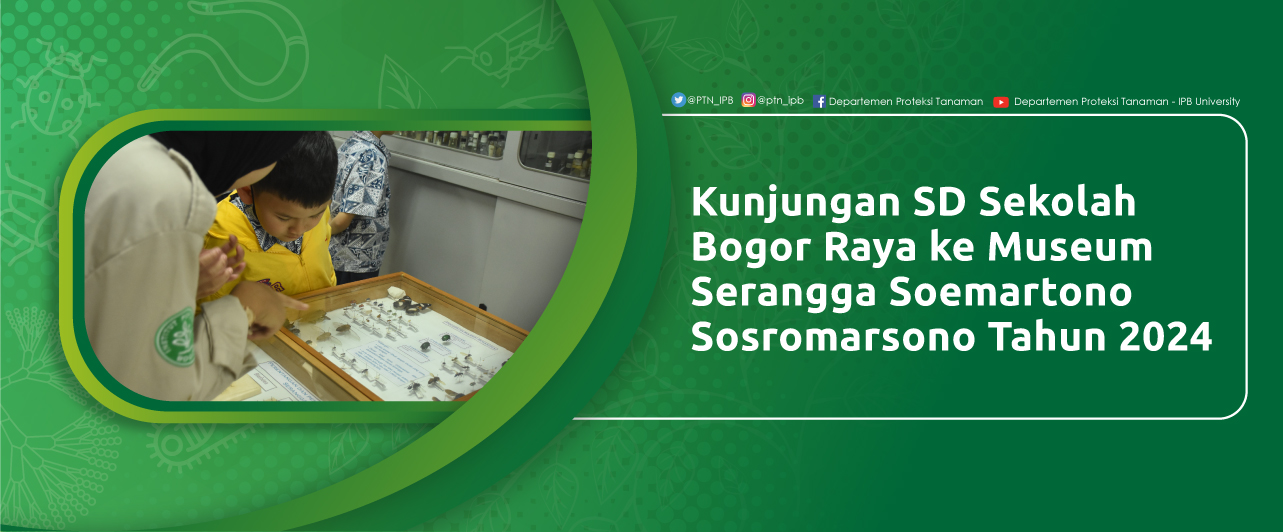
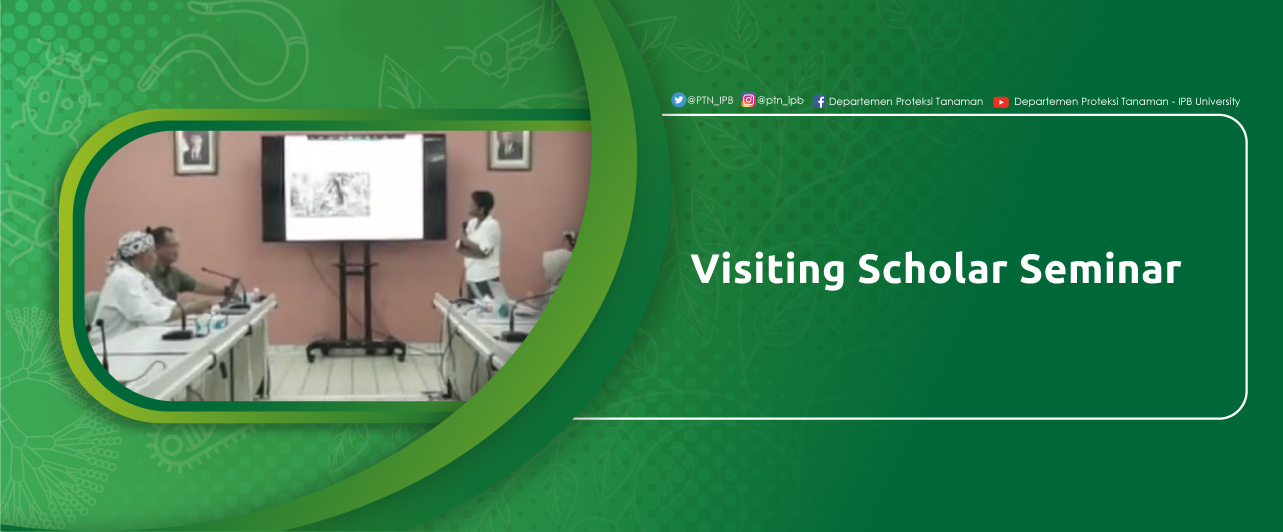
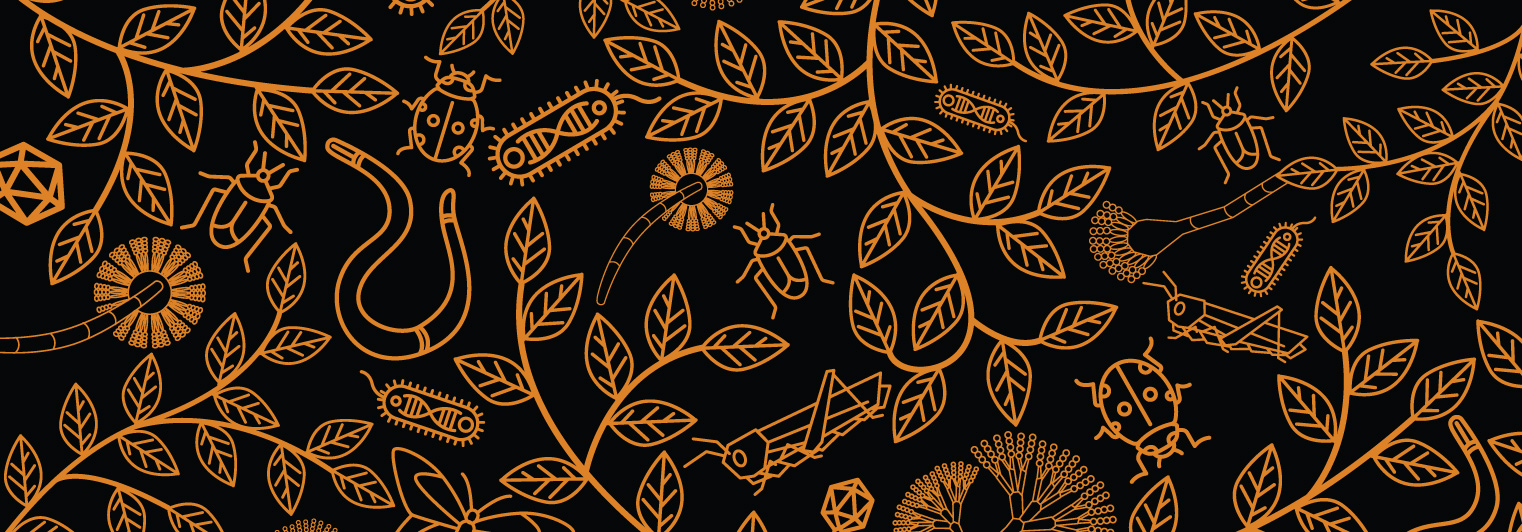

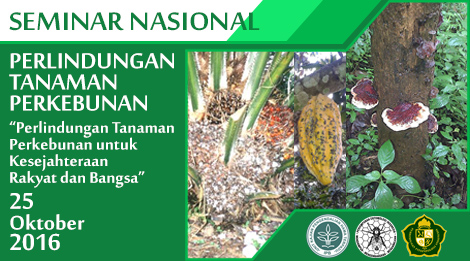

.jpg)